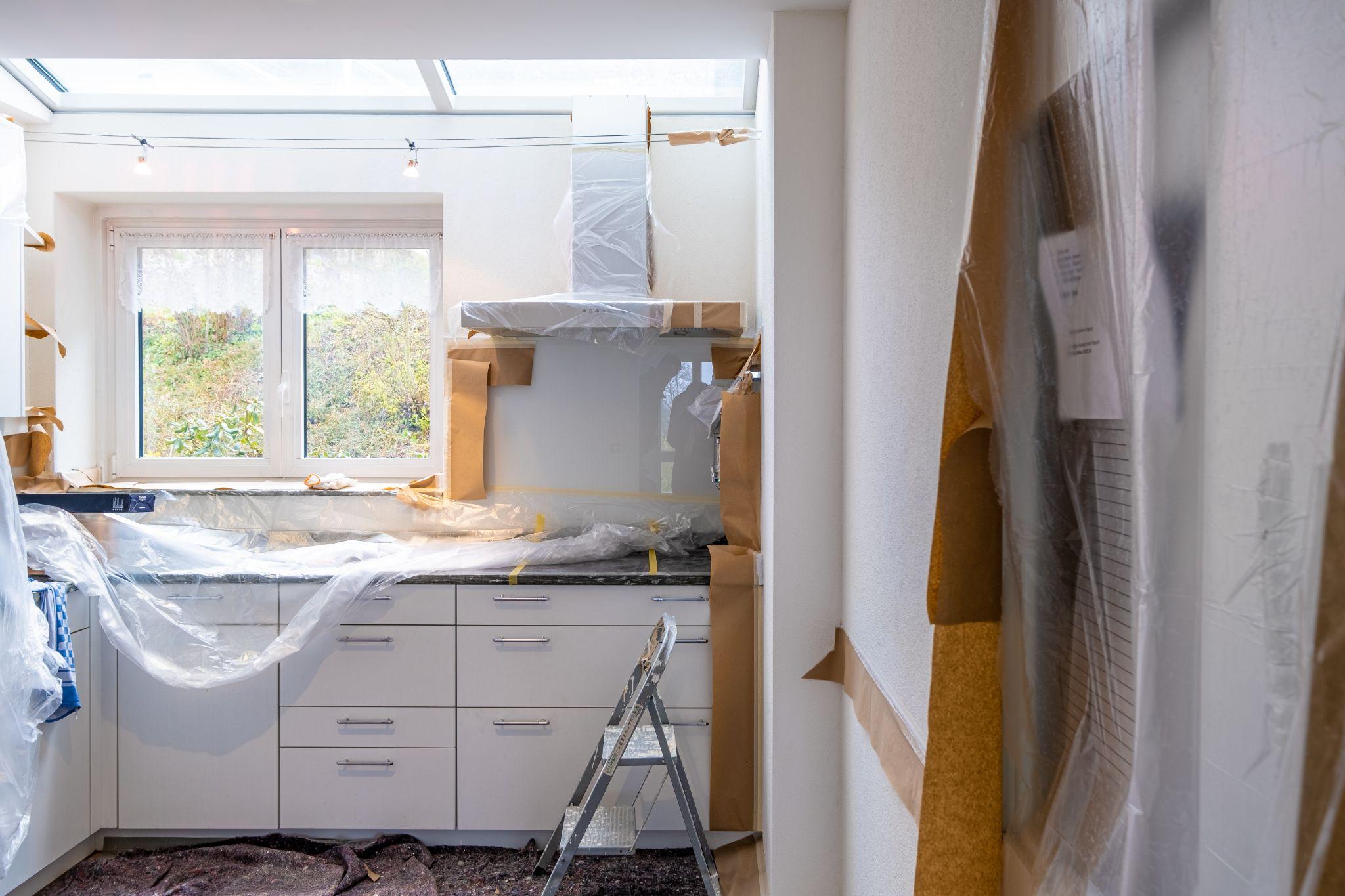
As the name suggests, residential architects work on designing homes. However, each city has its set of regulations. In New Jersey, residential architects must conform to the New Jersey building codes. Residential structures like townhouses or two-bedroom houses conform to local ordinances such as zoning and the most recent 2018 International Residential Code New Jersey Edition.
The other project categories are as follows: renovations, alterations, addition, and reconstruction. These are defined according to the New Jersey Department of Codes and Regulations under the Rehabilitation Sub-code.
Renovation
This category is for work that is generally restorative such as the replacement of interior finish, trim, doors, or equipment, but renovation involves the use of different materials. There is no reconfiguration of space. The regulations (NJAC 5:23-6.3) define renovation as “the removal and replacement or covering of existing interior or exterior finish, trim, doors, windows or other materials with new materials that serve the same purpose and do not change the configuration of space. Renovation shall include the replacement of equipment or fixtures.” In general, the materials used and the methods of installation must conform to the requirements found in the materials and methods section (NJAC 5:23-6).
When renovation work is undertaken, then, two sets of requirements apply; products and practices and materials and methods.

Most homeowners will renovate their homes at least once in their lifetime. Renovations often tend to upgrade properties and add value to them as well. For example, the industry’s standard ROI for a mid-range kitchen renovation falls between 50% to 60% of the overall budget for the renovation.
Alteration
This category of work involves a change in the layout of interior space while other portions of the space remain without rearrangement. Alteration is defined in the regulations as “the rearrangement of any space by the construction of walls or partitions, the addition or elimination of any door or window, the extension or rearrangement of any system, the installation of any additional equipment or fixtures, and any work which affects a primary structural component.” There is a short list of materials that may not be used, as well as products or practices which must be used when alteration work is undertaken. The materials and methods requirements also apply to alteration work. To address the possibility that the reconfiguration of space could create a safety hazard, there are some additional requirements for alteration work, which specify that the work undertaken cannot create a nonconformity with the basic requirements that did not exist before the alteration began.
This is a key issue to understand. In an alteration, the portion of the building being worked on does not need to be brought up to the standard established in the basic requirements. The basic requirements are used as a measuring stick. The work being done cannot make the building less conforming to the basic requirements than it was before the work was undertaken.
So, there are three sets of requirements that apply to an alteration project: products and practices, materials and methods, and basic requirements.
When it comes to alterations if permitted, many homeowners tend to opt for an extension to increase their floorplan. It might be extending into an outdoor patio or even extending the bedroom for a bigger space.
Addition
Additions are required to comply with the provisions of the technical sub-codes for new construction of the Uniform Construction Code. Work in the existing building which is related to the addition must comply with the requirements for repair, renovation, alteration, and reconstruction, as applicable, where such work is undertaken.
Some requirements apply to additions. For example, the addition cannot extend the height or area of the building beyond the limits established by the rehab sub-code.
Reconstruction
This category involves extensive work on the interior of a building, floor, or tenant space. It is commonly referred to as a “gut rehab”. The regulations define reconstruction as “any project where the extent and nature of the work are such that the work area cannot be occupied while the work is in progress and where a new certificate of occupancy is required before the work area can be reoccupied.” Reconstruction includes repair, renovation, and alteration in any combination. Reconstruction does not include projects comprised only of floor finish replacement, painting or wall-papering, or the replacement of equipment or furnishings. Asbestos hazard abatement and lead hazard abatement projects are not classified as reconstruction although occupancy of the work area is not permitted.
A reconstruction project has a delineated work area. A reconstruction project involves an entire use, primary function space, or tenancy; projects that do not involve an entire use, primary function space, or tenancy are not reconstruction projects.
Where the work area is an entire use, primary function space, or tenancy, a project becomes reconstruction when two conditions are met: 1) the area where the project is taking place cannot be occupied while the work is in progress; and 2) when a new certificate of occupancy is required before the area can be reoccupied.
Repair, renovation, and alteration work that make up a reconstruction project must comply with the requirements for the applicable category of work. The entire area must comply with basic requirements. Certain reconstruction projects must also meet the supplemental requirements, which apply only when the work area for a reconstruction project exceeds a specific size. Each supplemental requirement has its threshold of applicability. The basic requirements and the supplemental requirements are arranged by use group.
A reconstruction project includes three Sets of Requirements, products and practices, materials and methods, and basic requirements. It may also include a fourth set of requirements, supplemental requirements, depending on the size of the reconstruction project, and it could include new building elements, depending on the scope of work.
Homeowners who want to stay in the same house but want it upgraded generally opt for reconstruction. It may even get them a better house for less money. However, during reconstruction homeowners must make other living arrangements until occupancy can be resumed.
Reconstruction is one of the most tedious construction methods as it takes time and displaces homeowners until it is complete.
What Are the Pros and Cons of These Projects?
Each project comes with its set of upsides and downsides. Here are some that might be useful to know before your venture.
Pros
- These can save you money especially investing in higher-quality materials.
- Renovating your home could create a more relaxing environment.
- Updating your kitchen or bathroom could count towards increasing the overall value of your property. You could always consult your local architect for more information on this.
- The way homes look in a neighborhood could also impact the resale value of other properties.
Cons
- These projects bring a lot of stress.
- The benefits are entirely based on the job being done well.
- Future buyers might not share your tastes affecting the asking price for your home.
Be Prepared!
In all cases, residential architects must follow the State code. Aric Gitomer Architect LLC specializes in these projects with an experience over thirty years now. We have been working by the book and established a strong base in our beloved New Jersey. For any information regarding how and when to start or even the simplest queries, consult your local residential architect. Who knows, your home project might be in the works!


